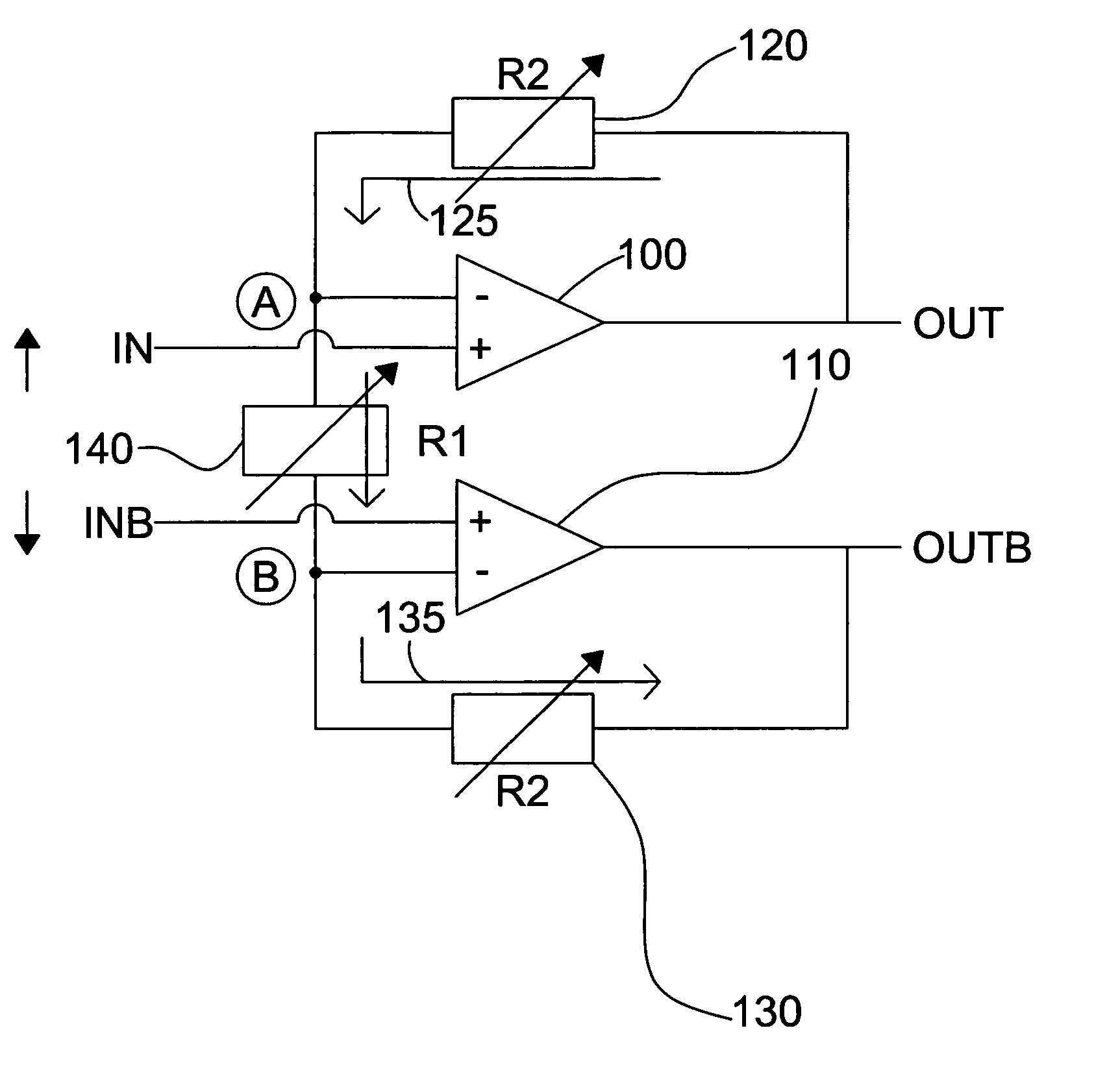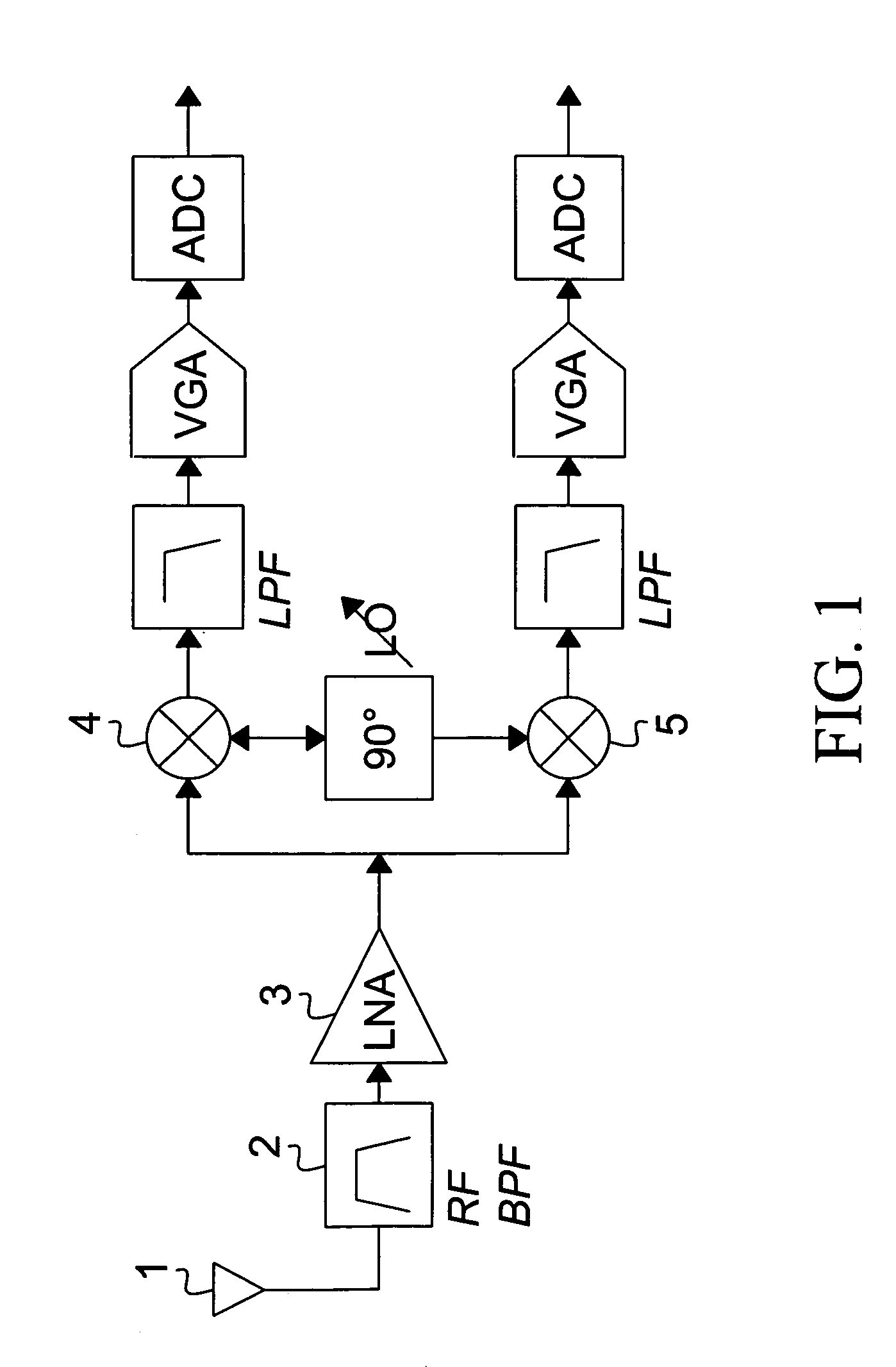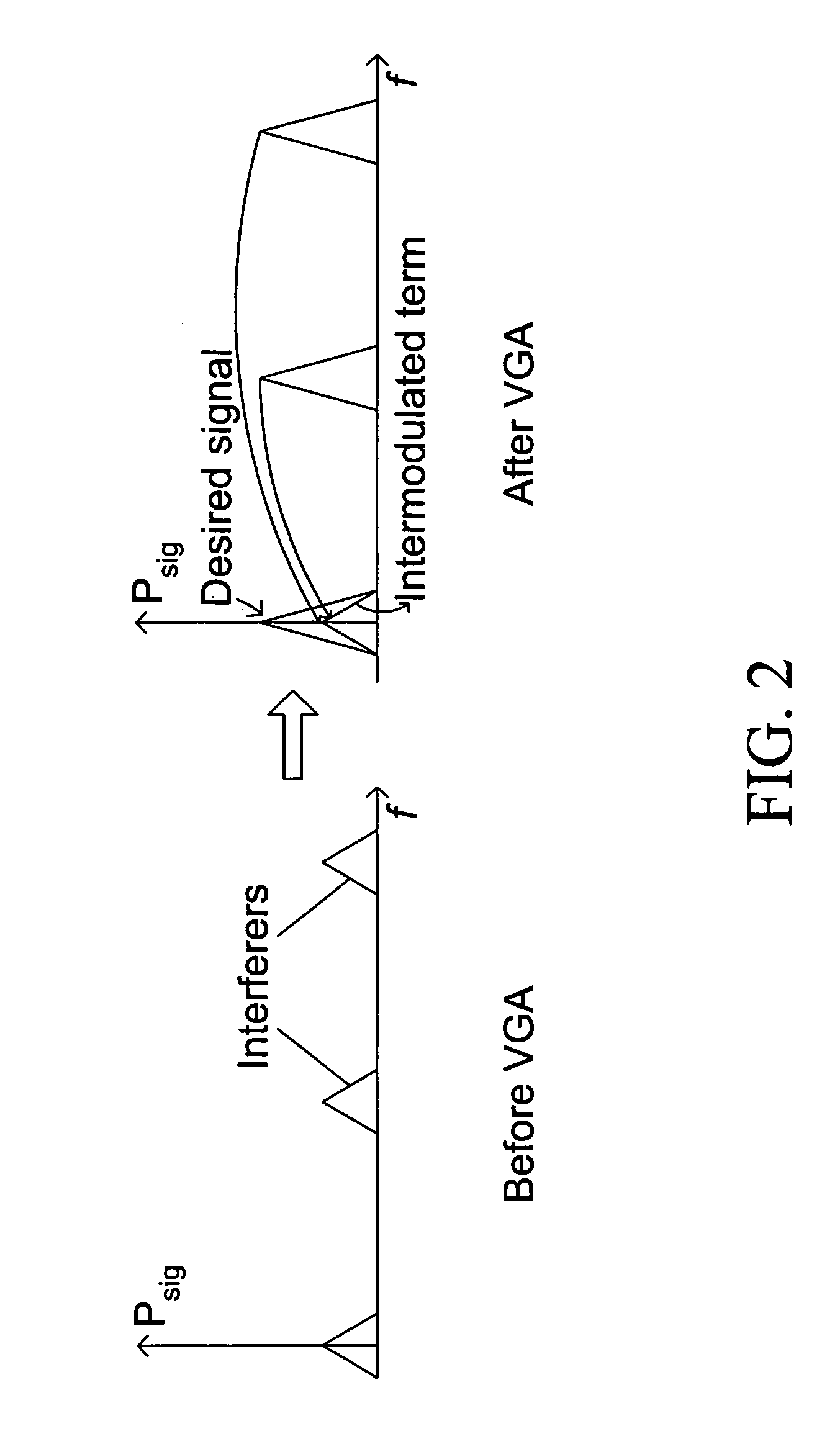Highly linear variable gain amplifier
a variable gain, high-linear technology, applied in the direction of dc-amplifiers with dc-coupled stages, differential amplifiers, amplifiers with semiconductor devices/discharge tubes, etc., can solve the problems of serious corruption of desired signals, large amplitudes of interfering signals, so as to improve linearity and linearity greatly, the effect of improving the signal quality in the amplifier outpu
- Summary
- Abstract
- Description
- Claims
- Application Information
AI Technical Summary
Benefits of technology
Problems solved by technology
Method used
Image
Examples
Embodiment Construction
[0041]FIG. 6 shows a variable-gain amplifier in accordance with a preferred embodiment of the present invention. This amplifier includes first and second single-ended operational amplifiers 100 and 110 and three variable resistors 120, 130, and 140. The non-inverting terminals of the first amplifier and second amplifiers are connected to receive differential input signals IN and INB respectively. The inverting terminal of the first amplifier is connected to the output OUT of amplifier 100 through a feedback path which includes resistor 120, and the inverting terminal of the second amplifier is connected to the output OUTB of amplifier 110 through a feedback path which includes resistor 130. Resistors 120 and 130 preferably have the same resistance values.
[0042]The non-inverting of the first amplifier and the non-inverting terminal of the second amplifier are coupled to one another through resistor 140, which is preferably different in value from the other two resistors. More specifi...
PUM
 Login to View More
Login to View More Abstract
Description
Claims
Application Information
 Login to View More
Login to View More - R&D
- Intellectual Property
- Life Sciences
- Materials
- Tech Scout
- Unparalleled Data Quality
- Higher Quality Content
- 60% Fewer Hallucinations
Browse by: Latest US Patents, China's latest patents, Technical Efficacy Thesaurus, Application Domain, Technology Topic, Popular Technical Reports.
© 2025 PatSnap. All rights reserved.Legal|Privacy policy|Modern Slavery Act Transparency Statement|Sitemap|About US| Contact US: help@patsnap.com



